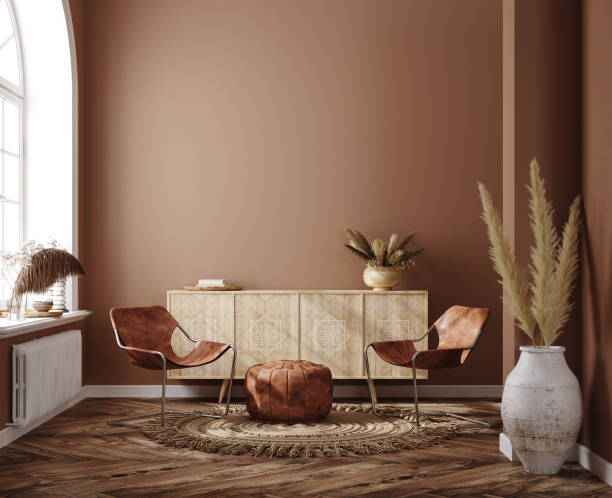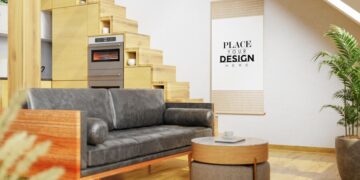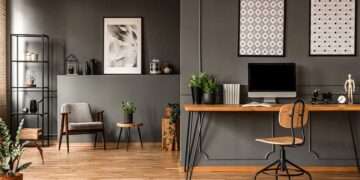Introduction
When you are developing furniture, ergonomic design is key. Ergonomics is the study of how humans work and how they use objects in their everyday lives. This includes chairs, desks, tables and more. Ergonomics has been around for many years but it has only recently gained a lot of attention due to the health risks associated with working long hours on bad furniture.

When buying furniture, check whether it’s designed ergonomically or not.
- Check the height of the armrests, as well as their ability to be adjusted. The best armrests are those that are adjustable in height and angle so you can position your arms at just the right angle for comfort and health.
- Look for furniture with adjustable shelves or drawers that allow you to customize their storage space according to what’s needed at any given time (for example, if you’re storing books during study sessions but don’t need anything else in there).
- Don’t be fooled by cheap price tags–a good piece of furniture will last longer than one made cheaply out of particle board or plastic resin; after all, if you’re going to spend money on something like this anyway then why wouldn’t it be worth considering how long it lasts?
An understanding of ergonomics can help us design better products for our health.
Ergonomics is the study of how people use furniture and other objects in their daily lives. It’s a field that has been around since the 1950s and can help us design products that are more comfortable and useable, while also improving productivity.
The idea behind ergonomic seating is to provide proper support for your shoulders, back, hips and feet while sitting at a desk or in an office chair. This helps you avoid pain caused by poor posture–a condition known as “ergonomic disease”–that might lead to serious problems down the road such as carpal tunnel syndrome (CTS).
Ergonomics means the design of things to make them easier to work with.
Ergonomics is the study of how people use furniture and other objects in their daily lives. It’s about designing things that are easier to use and more comfortable to use, which can improve your overall well-being. The most important aspect of ergonomics is that it focuses on the comfort of the user–not necessarily just physical comfort but also psychological, social and emotional as well as spiritual aspects of working with something like a chair or desk.
Ergonomics can help us design products that are more comfortable and useable.
Ergonomics is the study of how people use furniture and other objects in their daily lives. It can be used to reduce stress levels, make workplaces more productive, and help us design products that are more comfortable and usable. The goal of ergonomic design is to create products that function well while they are being used by the end user. This means that you need to consider how your product will be used by both individuals with different heights or weight requirements as well as those who have mobility issues due to arthritis or other conditions that limit movement ability.

With correct ergonomics you can have great furniture at an affordable price
The right ergonomic furniture can have a huge impact on the health and comfort of your family. The more time you spend sitting down, whether at a desk or in front of your TV, the more likely it is that your body will suffer from back pain, neck strain and other aches and pains in the legs.
The good news is that there are affordable ways to improve your home’s health by buying quality ergonomic furniture. If you buy something cheap but don’t care about it being comfortable or durable–or both–you’ll probably end up tossing it out after one year (or less). But if you pay more for better quality models like this chair from Herman Miller which has been designed specifically with comfort in mind:
Ergonomic furniture design can help people avoid health issues.
Ergonomics is the science of designing products, systems and processes to fit people’s needs. This science has been used for decades to help prevent or reduce discomfort, injuries and other health issues by providing an optimal fit between people and their environment. Ergonomic furniture design can help you avoid back pain, carpal tunnel syndrome or repetitive stress injuries (RSI).
Ergonomic design can reduce stress levels.
The way you sit in your chair or on a couch can have a huge impact on your overall health, productivity and comfort. With ergonomic furniture, you can reduce the risk of injury by reducing pressure points on your body and reducing back pain by sitting up straight instead of slouching. You’ll also be able to maintain a healthy posture while using it because the furniture was designed with comfort in mind–and this helps prevent fatigue over time as well!
Ergonomics is the study of how people use furniture and other objects in their daily lives.
Ergonomics is the study of how people use furniture and other objects in their daily lives. It’s a science that studies how we interact with our environment, including ourselves as well as our surroundings, to maximize comfort and minimize injury. This can help us design better products for our health and well-being–and it’s also good for business!
Designing your furniture around ergonomics will improve comfort and productivity.
Ergonomics is a science that focuses on how people are affected by their environment. It can be defined as “the study of the design of machines and tools for use by humans.” When designing your furniture, it’s important to consider ergonomic principles and whether or not you need to make any adjustments.
The human body was designed with certain angles and movements in mind–for example, our arms should be bent at 90 degrees when we’re writing or typing on a keyboard; our legs should be bent at 180 degrees when we sit down in order to improve blood flow throughout the body. By following these natural guidelines while designing your office space, you can ensure that you’re giving people enough space while still maintaining good posture throughout their day-to-day activities (and beyond). This will help them feel healthier overall–not just physically but mentally too!

Conclusion
The design of furniture is important in the office environment. Ergonomic furniture has been shown to improve productivity and satisfaction among employees, but sometimes it can be difficult to find affordable options that are ergonomically designed. It’s important that you consider your body type when choosing what kind of furniture you want for your workstation or home office space so that you feel comfortable working on them throughout the day. If there isn’t an option available for ergonomic design for your workspace, then make sure that any items purchased have been tested by experts who know firsthand about how people interact with them from all types of professions!














